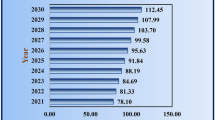Abstract—Coatings are made using SKTN-f methylphenylsiloxane rubber with different contents of PMS-200 polymethylsiloxane oil and BS-100 white carbon nanoparticles. The authors studied the abrasion resistance and hydrophobic properties (wetting angle, roll-off angle) of coatings and ice adhesion to their surfaces. It is shown that the introduction of polymethylsiloxane oil into the polymer matrix decreases abrasion resistance and hydrophobic properties of the coatings, while at the same time reducing surface ice adhesion. It was established that the introduction of BS-100 nanoparticles can increase the physicomechanical characteristics of coatings while maintaining the level of functional properties. The obtained results for the dependence of functional properties on the chemical composition of the coatings are explained by their structural features; in particular, polymethylsiloxane oil is evenly distributed over the bulk of the polymer matrix, enveloping agglomerates of white carbon nanoparticles emerging on the surface, thereby forming a multimodal roughness, which in turn increases the hydrophobic properties of coatings.






Similar content being viewed by others
REFERENCES
S. V. Kondrashov, K. A. Shashkeev, G. N. Petrova, and I. V. Mekalina, “Constructional polymer composites with functional properties,” Aviats. Mater. Tekhnol., No. S, 405 (2017).
E. N. Kablov, L. V. Solov’yanchik, S. V. Kondrashov, Yu. Yurkov, V. M. Buznik, P. P. Kushch, G. A. Kichigina, D. P. Kiryukhin, and T. P. D’yachkova, “Electroconductive hydrophobic polymer composite materials based on oxidized carbon nanotubes modified with tetrafluoroethylene telomers,” Nanotechnol. Russ. 11, 782 (2016).
A. S. Chainikova, L. A. Orlova, N. V. Popovich, et al., “Functional composites based on glass/glass-ceramics matrixes and discrete fillers: properties and possible applications,” Aviats. Mater. Tekhnol., No. S6, 52 (2014).
E. N. Kablov and V. O. Startsev, “Systematic analysis of the climatics influence on mechanical properties of the polymer composite materials based on domestic and foreign sources (review),” Aviats. Mater. Tekhnol., No. 2, 47 (2018). https://doi.org/10.18577/2071-9140-2018-0-10-74-82
V. N. Kirillov, V. A. Efimov, A. K. Shvedkova, and E. V. Nikolaev, “Testing of climatic factors and the mechanical loading effect upon the polymer composite structure and properties,” Aviats. Mater. Tekhnol., No. 4, 41 (2011).
E. N. Kablov, “Structural and functional materials—the basis of economic, scientific and technical development of Russia,” Vopr. Materialoved., No. 1, 64 (2006).
E. S. Grinats, A. B. Miller, Yu. F. Potapov, and A. L. Stasenko, “Experimental and theoretical studies of icing processes of nanomodified superhydrophobic and ordinary surfaces,” Vestn. MGOU, Ser. Fiz.-Mat., No. 3, 84 (2013).
G. P. Klemenkov, Yu. M. Prikhod’ko, L. N. Puzyrev, and A. M. Kharitonov, “Modelling of icing of flying vehicles in climatic wind tunnels,” Thermophys. Aeromech. 15, 527 (2008).
M. B. Bragg, A. P. Broeren, and L. A. Blumenthal, “Iced-airfoil aerodynamics,” Prog. Aerospace Sci. 41, 323 (2005).
T. M. Schutzius, S. Jung, T. Maitra, et al., “Physics of icing and rational design of surfaces with extraordinary icephobicity,” Langmuir 31, 4807 (2014).
M. J. Kreder, J. Alvarenga, P. Kim, and J. Aizenberg, “Design of anti-icing surfaces: smooth, textured, or slippery?,” Nat. Rev. Mater. 1, 15003 (2016).
K. R. Khedir, G. K. Kannarpady, C. Ryerson, and A. S. Birisa, “An outlook on tunable superhydrophobic nanostructural surfaces and their possible impact on ice mitigation,” Prog. Org. Coat. 112, 304 (2017).
L. Boinovich, A. M. Emelyanenko, V. V. Korolev, and A. S. Pashinin, “Effect of wettability on sessile drop freezing: when superhydrophobicity stimulates an extreme freezing delay,” Langmuir 30, 1659 (2014).
K. K. Varanasi, T. Deng, J. D. Smith, et al., “Frost formation and ice adhesion on superhydrophobic surfaces,” Appl. Phys. Lett. 97, 234102 (2010).
S. V. Kondrashov, A. A. Pykhtin, L. V. Solov’yanchik, et al., “Investigation of the dependence of ice adhesion to polyurethane coatings on their physical and mechanical properties,” Tr. VIAM, No. 3, 87 (2019). http://www.viam-works.ru. Accessed July 10, 2019. https://doi.org/10.18577/2307-6046-2019-0-3-87-95
P. Kim, T.-S. Wong, J. Alvarenga, et al., “Liquid-infused nanostructured surfaces with extreme anti-ice and anti-frost performance,” ACS Nano 6, 6569 (2012).
Z. A. Janjua, B. Turnbull, K.-L. Choy, et al., “Performance and durability tests of smart icephobic coatings to reduce ice adhesion,” Appl. Surf. Sci. 407, 555 (2017).
V. P. Kablov, V. I. Shabanova, and L. V. Aksenov, “Modification of silica fillers for tire rubbers,” in Proceedings of the 17th Conference on Rubber Industry. Raw Materials. Materials. Tekhnologies 2011, Moscow, May 23–27,2011, p. 42.
V. P. Shabanova, V. I. Aksenov, and V. F. Kablov, “Methods of modification of silicic acid fillers for tire rubbers,” Prom. Pr-vo Ispol’z. Elastomer., No. 3, 34 (2012).
I. D. Simonov-Emel’yanov, A. A. Pykhtin, and K. A. Mikhal’chenko, “High impact nanocomposites based on epoxy oligomer and silicon dioxide,” Konstrukts. Kompozits. Mater., No. 1, 38 (2017).
I. D. Simonov-Emel’yanov, A. A. Pykhtin, S. A. Smotrova, and A. N. Kovaleva, “Structure formation and physicomechanical characteristics of epoxy nanocomposites,” Vse Mater. Entsikl. Sprav., No. 2, 2 (2017).
K. A. Shashkeev, V. S. Nagornaya, I. A. Volkov, S. V. Kondrashov, T. P. D’yachkova, A. I. Kondakov, K. M. Borisov, and G. Yu. Yurkov, “Superhydrophobic conducting coatings based on silicone matrix and carbon nanotubes,” Russ. J. Appl. Chem. 90, 1107 (2017).
E. N. Kablov, “Innovative developments of FSUE “VIAM” SSC of RF on realization of ‘Strategic directions of the development of materials and technologies of their processing for the period until 2030’,” Aviats. Mater. Tekhnol., No. 1, 3 (2015). https://doi.org/10.18577/2071-9140-2015-0-1-3-33
Author information
Authors and Affiliations
Corresponding author
Rights and permissions
About this article
Cite this article
Solov’yanchik, L.V., Pykhtin, A.A., Vednikova, V.S. et al. Study of the Influence of Silicon Dioxide Nanoparticles on the Surface Properties of Silicon Organic Coatings. Nanotechnol Russia 14, 216–221 (2019). https://doi.org/10.1134/S1995078019030121
Received:
Revised:
Accepted:
Published:
Issue Date:
DOI: https://doi.org/10.1134/S1995078019030121




